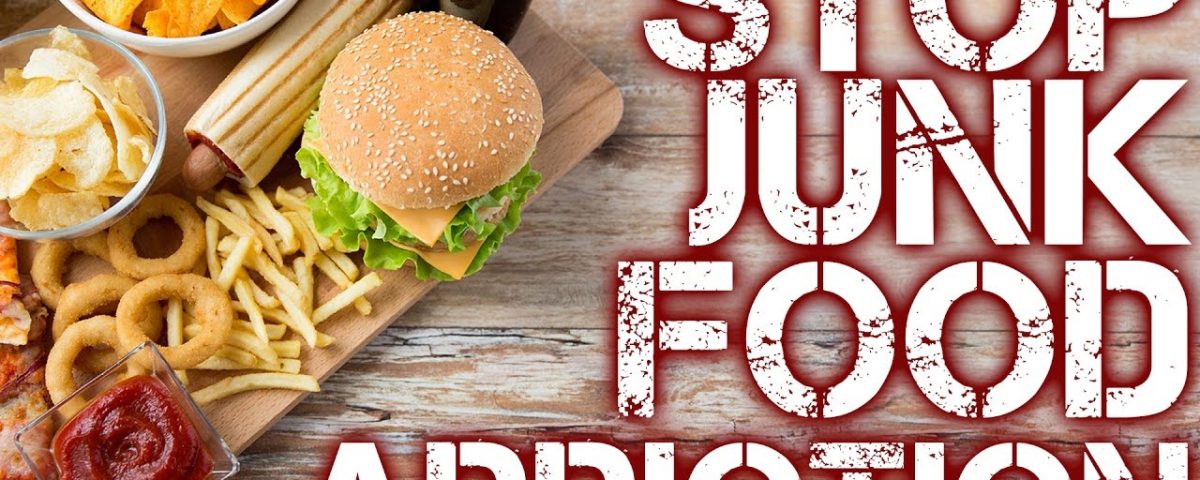
Keep Calm & Eat Dates
October 20, 2017
Candy, Treats, & Sweets- Oh My
October 27, 2017Even with the strongest intentions, cravings can derail our health goals and can be detrimental to our waistline. Many folks we work with truly want to eat healthier, but explain that they can’t help but crave salty, high fat, and sugar filled foods.
However, did you know that the more you eat these unhealthy foods, the more you crave them? Say what?! Yup! Manufactures add salt, sugar, and fat to foods for a reason–to make you eat more and spend more.
Sugar, salt and hidden sources of fat come in all shapes and sizes and are practically in everything from cereal to ketchup to that so called healthy granola bar.
The reason we tend to crave more of these unhealthy foods is because these ingredients are typically in a processed form, which does does not provide the body with any nutrition what so ever—just lots of empty calories. Therefore, the body does not feel satisfied and nourished after eating these items, making you crave even more of these foods.
Even if you are consuming a zero calorie sweeteners in your foods or beverages, it still makes your taste bugs crave even more sweet things. At On Target Living, this is one of the reason’s that we don’t recommend sugar substitutes especially artificial sweeteners. If you feel you need to add something sweet to your beverages, stevia will be the healthiest zero calorie option. However, getting your sweet fix from real foods like fresh fruit, dates, dried mangoes, and figs will be your best bet.
Did you know that flavor comes from nutrients? That means that the healthiest foods will actually be the most flavorful. Therefore, the most delicious dishes tend to be made with seasonal and fresh ingredients that are full of flavor and nutrition. And guess what? The more you eat fresh and wholesome foods–the more you actually crave these foods and the less cravings you will have for unhealthy foods (AKA: not-real foods like soda pop, fast food, packaged treats, or anything that comes in a box).
40% of the items in the grocery store aren’t real food. Most items are just made with a handful of synthetic ingredients and artificial flavors which are designed to make you overeat. This leaves you wanting more and more because these so called “foods” do not provide nourishment, or satisfy your hunger.
A study published this month in the journal BioEssays finds that your gut microbes may influence your cravings based on the nutrients they need to thrive. (The more you eat processed and refined foods that cause bad bacteria to thrive—the more you crave it).
The main reason for widespread over-consumption of food in the developed world is that people don’t feel satiated. Our bodies are looking for nutrients so we eat mass amounts of food, food which has little to no nutritive value, and because we’re not getting the nutrition we need our body cries out for more.
We weren’t born craving junk. As babies, we were born knowing what to eat. We started on breast milk or formula, then we slowly eased into pureed baby foods and once we got this process down, we started to introduce new foods and textures from the main food groups. Of course there were probably some foods we didn’t care for at first, but the more we were introduced to those foods, the more we actually learned to like them. Did you know that a child may need to try a certain food 12 times before learning to like it? It seems this may be true of adults too. Just because you tasted something once and said “yuck” doesn’t mean it’s the death for that food. Try new ways to prepare it and try it again and again, especially if you know how great it is for you. I would hate to have you miss out on something so “delicious.” You aren’t addicted to junk food, I promise!
The good news is we can train our taste buds to crave whatever it is we choose by simply eating more of that particular food.
What’s The “Dillio” with Sugar?
Some people believe that all sugar—no matter where it comes from, is the culprit for making our society unhealthy and obese. But, sugar is not the problem in our society—it is the over-consumption of processed sugar like white sugar and high fructose corn syrup that is the real issue. Sugar is in everything from breads to ketchup to breakfast cereal. It seems to be everywhere we turn. By eating these sugar- filled foods, it makes us crave them even more causing us to overeat and over consume sugar as a whole. It is an ugly on going cycle that needs to be stopped!
Want to learn how to defend yourself from this scary world and over-consumption of sugar? Arm yourself by knowing exactly where sugar is lurking. Start by reading the ingredients list and choosing items with fewer ingredients and no added sugars, cane juice, maltodextrin, dextrose, syrups, or glucose of any kind. Avoid anything that ends in “ose.” Instead, find ways to add natural sweetness to your life.
At On Target Living we love upgrading everything from our food choices to our workouts to even the way we sleep. Why should sugar be any different?
Do you think the sugar found in sugary cereals does the same thing in our body as sugar found in an apple? An apple is sweet, juicy, high in fiber, vitamins, and minerals and makes you feel satisfied unlike sugary cereal, which makes you feel hungry just minutes after eating it.
Let’s dive in a little deeper. An apple contains natural sugar called fructose. Fructose is the natural sugar found in honey and fruit. When eaten in its whole form (closest to the source) it provides the body with nutrition and nourishment. Yes, an apple may be considered “high in sugar” but what is the source of this sugar? It’s simply real food—real fruit—from a real tree! Due to all of the good and delicious things that go with it—an apple is a perfectly wrapped package.
Your body knows exactly what to do with the “sugar” from an apple compared with “processed sugar” found in sweetened beverages and processed foods. When you bite into an apple, you are instantly flooded with mouth watering digestive enzymes. This is why an apple starts to turn brown when you bite into it. When these enzymes are exposed to air it causes enzymatic browning. Make sense? This instantly starts your body’s digestive process. Not only is your body digesting and absorbing this sugar—but it is also doing it very slowly due to the fiber found in the skin and pulp of the apple. Fiber is a type of carbohydrate that the body can’t digest. This causes you to feel fuller longer and can regulate bowel movements by adding more bulk to your stools. (How did we go from talking about sugar to bowel movements?! Ha—did I get your attention?)
In today’s world we have so many more allergies, food intolerances, and digestive issues than we ever did 20 years ago. This is because we got away from eating foods in their natural source and tend to eat foods that come in a box or package and contain no digestive enzymes what so ever. Everything we do is centered on convenience and flavor. However, the gut thrives on healthy digestive enzymes from real foods. Plus, 90% of the immune system lives in the gut and when we have poor gut health, we comprise our immune system. This contributes to more allergies, food sensitives, and digestive problems. Don’t just treat your symptoms with a digestive enzyme in a pill form, or switch to gluten-free foods–eat foods closest to their natural source for better gut health. Plus, healthy foods like fruits, vegetables, lean meats, healthy fats, and most ancient grains don’t even contain gluten.
When it comes to sugar, simply, upgrade your sugar by choosing natural ways to sweeten! When you choose natural ways to sweeten, you will surprisingly crave less because it will be much more nutritious and satisfying. Plus, the body knows what to do when you give it the real ingredients.
Real Fruit
There is nothing sweeter than nature’s candy. Fruit of all kinds is naturally sweet and can curb your sweet tooth like a total rock star. Take it a step further by snacking on dried fruits like raisins, mango, pineapple, apples, and bananas. These are concentrated sources of the whole fruit and provide more flavor making them great additions for making your recipes sweeter and healthier. You can also try adding applesauce or pureed fruit to your recipes in place of fat/oil for more flavor and texture. Want sweetness at the source? Can it get any sweeter than dates or figs? Not only are these fruits super sweet, but they are also loaded with fiber and the calming mineral, magnesium. Add them to smoothies, plant based milks, or blend with nuts for a delicious date/fig-nut pie crust.
Organic Coconut Sugar
Coconut sugar is derived from boiling and dehydrating the sap of the coconut palm. It contains more nutrients than table sugar and is lower on the glycemic index. Coconut sugar tastes similar to brown sugar with more of a caramel flavor and can be used as a 1:1 substitute in baking. This sugar is not processed, allowing it to retain trace amounts of vitamins and minerals.
Organic Agave Nectar
Agave is produced from the blue agave plant. Since agave is one and a half times sweeter than table sugar, a little goes a long way. It also doesn’t affect your blood sugar as much as table sugar. Because there are now a lot of agave products that tend to be highly processed—always choose an organic agave nectar brand and make sure the only ingredient listed is 100% organic agave.
Raw Honey
Raw honey provides antibacterial and antioxidant properties as well as trace amounts of vitamins and minerals. Some studies have shown that honey helps cure coughs and sore throats. Honey, similarly to agave, is sweeter than table sugar, allowing you to add more flavor for less. (Local honey is also a good choice)
100% Pure Organic Maple Syrup
Maple syrup comes directly from the sap of the tree and is high in both manganese and zinc. Manganese assists with many enzyme reactions in the body, while zinc has immune boosting properties. Try sweetening your oatmeal or desserts with maple syrup for a great sweet taste.
Organic Stevia
Stevia is made by simply combining the leaf of a stevia rebaudiana plant with a little water to get a no calorie sweetener, which has a similar look to sugar. Stevia is about 50 times sweeter than sugar, which means there is no need to use much at all. When looking for a no calorie sweetener, stevia is a better choice than artificial sweeteners, which are made of synthetic chemicals that the body doesn’t recognize.
100% Organic Pure Cane Sugar
If you simply can’t avoid sugar or if it is an essential ingredient in your recipes–switch to an organic source like organic cane sugar. Raw sugar cane is very nutritious but unfortunately we don’t have access to it in it’s whole form. It actually takes a machete to crack this baby open and is quite hard to eat! Watch this video below and see for yourself!
This is why sugar is now highly processed and genetically modified for mass production. Sugar ranks next to corn and soy as a high-risk genetically modified (GMO) crop. Which means, most sugars on the market will be genetically modified unless otherwise labeled with a USDA Organic or Non-GMO Project Verified seal.

Choosing foods at the source and buying local and organic will help you avoid these scary foods. Your best bet is to cook more meals at home and trust foods from the source.
5 Reasons You Crave Junk Food & How To Stop Them
- You are eating too much junk food. The more you eat junk food, the more you crave junk food. Fortunately, our taste buds can change just as fast as our behaviors. Try upgrading some of your processed foods, to foods with healthier ingredients. Overtime, you will find that it is quite easy to find healthy foods that actually taste good. Remember, that flavor comes from nutrients.
- You indulge too fast. Did you know that cravings truly only last 10 minutes? When cravings kick in, distract yourself, go for a walk, eat something healthy, drink water, and re-visit your craving. Chances are, it was just a craving in that moment from boredom, stress, dehydration, etc.
- You don’t want to miss out. Just because you say no to a craving or something not so healthy, doesn’t mean you can never have it. Say to yourself, “now is not the right time.” Perhaps you are saving yourself for that big tailgate party where you can indulge a bit for the sake of others and the social connection that comes with it. I promise this experience will be so much more worth it. Keep in mind that you don’t get pleasure when you over indulge.
- Your sleep sucks. Many people view sleep as a sign of weakness. Everyone is bragging about how little sleep they got the night before. However, sleep is cool, and it’s not cool to brag about lack there of. The human body needs 7-9 hours of sleep each night to function at its highest level. This is because the body goes through 4 different stages of sleep that are essential for healing the body. When we shortcut our sleep, we aren’t able to spend enough time in the stages that are essential for better health and performance. Stage 3 in particular is where our hormones become balanced. This includes your fat burning hormones like testosterone and human growth hormone, and our satiety hormone, leptin. When the body produces leptin after a good night’s sleep, it actually makes us feel more satisfied and less likely to overeat or crave unhealthy foods. On the other hand, when we don’t get enough sleep, the body releases our hunger hormone, ghrelin making us crave high fat, and high sugary foods. Sleep is an important piece to the weight loss equation which is why many health programs are starting to incorporate it.
- You have limiting beliefs around food. Many people believe that they don’t like healthy foods like fruits and vegetables because they tried broccoli once when they were five. Good news! You are not 5 years old anymore–don’t let these old limiting beliefs hold you back from living your best self. Did you know that our taste buds change every 6 years and that it take up to 12-15 tries before you develop a taste for certain foods. Experiment with new foods and flavors in the kitchen, make mistakes, and enjoy the taste of eating right.
“It’s impossible,” said pride. “It’s risky,” said experience. “It’s pointless,” said reason. “Give it a try,” whispered the heart.









